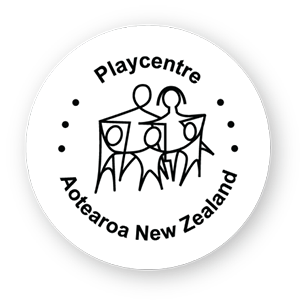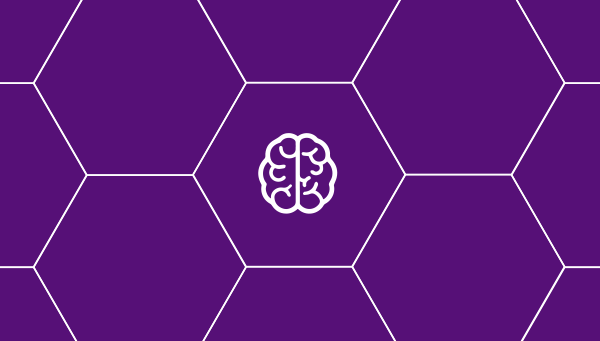Written by Keryn O’Neill MA, PGCertEdPsych, Knowledge Manager and Sue Younger, MA(Hons) MCW (Hons) DipTchg, DipProfEth, Trustee
Sadly, some pēpi, tamariki and rangatahi will experience potentially traumatic events, no matter how well we try to protect them. Distressing experiences have the potential to be harmful psychologically, physically, and/or socially. Sometimes they are even life-threatening. They can have lasting negative effects on one or more areas of their life. How can we understand what tamariki are experiencing and do our best to minimise any harm?
Sometimes these events occur on a global scale, affecting numerous people. The Covid-19 pandemic is an example of this. At other times, particular regions or local communities are most affected by events like earthquakes, bush fires, floods or acts of violence, such as occurred at Masjid Al-Noor and the Linwood Islamic Centre, and more recently at LynnMall.
Some events impact on an even smaller group, such as a serious car accident, family violence or sexual assault, which may affect tamariki, rangatahi and their whānau.
Tamariki and rangatahi have a range of feelings after any traumatic event, just as adults do. They might feel angry, sad, scared, worried or numb. Most likely, it will be a combination of feelings, that come and go over time.
Some tamariki also feel guilt or shame, even though they are not responsible for what has happened. In this case adult reassurance that they aren’t responsible can help a tamaiti deal with these feelings.1
Feelings and reactions will differ between different tamariki,2 even if their experience seems similar. For example, two classmates in a school lockdown, may have very different emotional reactions. Similarly, two siblings whose home is damaged in a natural disaster may each have different responses.
Factors that influence how tamariki are impacted by traumatic events
The way in which pēpi, tamariki, and rangatahi are affected by trauma depends on many things. These include:
- the extent to which tamariki were exposed to the event(s), i.e. were they or their family members directly involved or were they more indirectly impacted e.g. watching it online or hearing about it at school3
- their age. While people of any age can be affected, pēpi and younger tamariki are typically more vulnerable4
- the way adults around them are feeling and coping
- what other trauma they are exposed to in their life, before and after the recent traumatic event.5
Signs that your tamariki might be affected by traumatic events
While there are many ways tamariki can show stress, these are a few common examples:
- they might have trouble concentrating or taking in new information. This may mean they are not doing as well in their school work as they usually do
- they might appear to lose skills they’ve previously mastered. Doing things that seemed fairly easy prior to the traumatic experience may take a lot of effort afterwards. For example, young tamariki who were using the toilet successfully, may begin having accidents
- they might express their feelings differently and have bigger, or smaller, reactions to things than usual. For example, a usually easygoing tamaiti may quickly become angry when asked to do something they normally wouldn’t mind doing
- they might have difficulty falling or staying asleep
- they might have changes in their eating habits e.g. not feeling hungry, or eating more than usual.
While not true in all cases, boys are more likely to act out, or ‘externalize’ their distress, while girls are more likely to become more quiet and withdrawn.6 This can make girls’ distress easier to miss.
It’s important to note that for some tamariki there may be no outward signs of stress. The timing of peoples’ reactions to events can vary greatly. For some, their distress may be obvious very quickly; others may experience strong feelings sometime after the event. It’s important to spend time with and support tamariki even if they are not showing any obvious signs of being affected and even if the event doesn’t seem traumatic from our perspective.
What adults can do to help tamariki deal with traumatic events.
Spend time together doing things tamariki enjoy.
Tamariki of all ages need time with their parents, whānau and support people. Hanging out together and doing things tamariki enjoy, and giving them your full attention, has many benefits. It helps them to feel safe, it helps provide them with a sense of ‘connection’ to their parents and whānau, and it makes them feel that they’re important.
Importantly, it’s often in these quieter and more relaxed times with parents and whānau that tamariki may feel able to ask questions, share how they’re really feeling, or ask for what they need.
Tamariki seek support in a variety of ways; sometimes this will be direct, such as saying ‘I’m really angry’, or by crying. With other tamariki it will be less obvious, they’ll show what they need in indirect ways; by wanting to be physically close to their parents more often than they did before, or wanting help with tasks they used to do themselves e.g. tying their shoe laces. Children’s behaviour can give clues about what they need, when their words do not.
Encourage play
Tamariki might use play to work through what’s happened. Play is one way they can make frightening events more manageable and understandable7 and it gives them an opportunity to express and process their experiences, feelings, worries and hopes.8 Let them play. Give them lots of time for unstructured play. Play with them, letting them lead the play.
Try to understand your child’s feelings
Tamariki benefit when parents and other adults can put aside their expectations of how a tamaiti should feel, and accept how each individual child does feel. For example, saying ‘I know that you’re upset that our home is damaged’ shows more acceptance of how a tamaiti feels, than does telling them to ‘cheer up,’ or ‘calm down.’ Some responses to traumatic events may be easier for adults to understand and deal with than others.
Respect/recognise your child’s needs
It’s important for adults to recognise when tamariki do need comfort, or to talk about what’s happened and the way they are feeling. It’s equally important to be able to see when a tamaiti has had enough talking, and to support them to move on when they’re ready. For example, tamariki may talk or ask questions about what’s happened and then suddenly change the subject to ‘What’s for lunch?’ or ‘When are we going to the park?’. While this may take us by surprise, it probably means they have enough information or reassurance for the time being and are ready to move on to something else. For now. There’s a lot for our young ones to process and they’re likely to come back to it, over and over again. Let them decide when.
Adult reactions can affect pēpi and tamariki
The way adults feel and express their emotions following a traumatic event has an impact on the way tamariki deal with their own experience.9 Pēpi, tamariki and rangatahi pick up on the feelings of those around them; people such as parents, whānau, friends and teachers. Babies, in particular, are so much more aware of, and affected by, the way those around them are feeling, than many people realise.
Babies can easily feel stressed, as all is new and unknown to them, and this can be overwhelming. Both pēpi and young tamariki rely on the adults caring for them to help them to calm down. If those adults are themselves stressed, their pēpi may feel heightened stress, and will need soothing. If tamariki sense that the adults in their lives are struggling to cope they may not share their feelings, in order to avoid burdening their parents further.10
It is natural that adults, too, struggle following significant stressful events. Having strong support – from whānau, friends, community members, and/or appropriate professionals – will be helpful, not only for the parents’ own health, but also to help them to care for their tamariki. If tamariki feel that adults are supported by others, they are more likely to seek support for themselves.
Understanding stress & the brain. Why we (especially tamariki) ‘can’t think’ when we are stressed.
The stress response is essential to survival; it’s the way in which we deal with threat and is often known as our ‘fight or flight’ response.11 Under stress our bodies experience a number of changes; heart rate and blood pressure increase, and various stress hormones are released, including cortisol.12 In order to have the energy to do all this, some other bodily functions that aren’t needed for immediate survival shut down. This includes our higher thinking functions.
While the whole brain works together, many parts of the brain do have specific roles. When we are calm, the areas of the brain involved with our emotions work in a balanced way with those involved with our thinking. Under stress this balance changes, with the emotional parts ruling us more than the rational. We can probably all remember struggling to think clearly when we have been under stress, when we’ve been hurrying, or when we’ve been scared or anxious.
Both adults and tamariki have stress responses. However, adults’ higher brain functions, like reasoning and logic, are usually more established, which can enable us to better handle our emotional experience.13 In tamariki and rangatahi these skills are still developing. In fact, it’s not until our mid-twenties or thereabouts that we can reliably access this part of the brain. As a result, pēpi, tamariki, and rangatahi facing threat or stress have fewer resources to draw on. Therefore, they need more support.
In other words, the emotional parts of the brain are more likely to be in charge, without the usual input from the more thinking parts. This is one of the reasons why children’s emotional reactions to traumatic events are likely to be stronger than adults, and why they can have greater difficulty handling their feelings.
Both real and perceived threats can lead to the stress response.14 Even when the threat has passed (e.g. the flooding has stopped), tamariki may feel unsafe in other situations, triggering their stress response with all its effects on their brain and rest of their body. This can happen whether adults perceive a threat at that time or not.
Sensitive caregiving actually helps tamariki better regulate their stress hormone production.15 This means they are less likely to be harmed by ongoing exposure to higher stress hormone levels. It’s worth noting though, this doesn’t mean tamariki won’t still have some reaction to what’s occurred. It’s just that we can help them deal with it better. This can help them practice dealing with stress throughout their life.
Seeking professional help
Some people who have had, or are still experiencing, traumatic events manage well, with the help of their whānau and community supports. Others may require additional support, including professional help, for example to address any mental health impacts of their experiences. For some this extra help might be needed shortly after the traumatic events, while for others, it might be after some time has passed.
If parents are concerned about the severity of their child’s reaction, how long it is lasting, or the impact on their daily life, seeking appropriate professional help is advisable.
Depending upon their age, good places to start include the family doctor or school counselor. They may be able to help directly, or provide information about what’s available in your area for all types of budgets.
Conclusion
Having safe, supportive and dependable adults in their lives helps with children’s ability to cope with both what is happening now, and the extent to which they might be affected in the future. Just being there and doing the best we can to support our tamariki is what’s most important.
Footnotes
- Schonfeld & Demaria, 2015
- Schilpzand et al., 2018
- Schonfeld & Demaria, 2015
- Weems & Overstreet, 2008
- La Greca et al., 2010
- Pfefferbaum et al., 2015
- Frost, 1998
- Music, 2011
- Peek et al., 2018; Schilpzand et al., 2018
- Schonfeld & Demaria, 2016
- Sinnamon, 2019
- National Scientific Council on the Developing Child, 2005/2014
- Sinnamon, 2019
- Bruce et al., 2013
- National Scientific Council on the Developing Child, 2005/2014
References
Bruce, J., Gunnar, M. R., Pears, K. C., & Fisher, P. A. (2013). Early adverse care, stress, neurobiology, and prevention science; lessons learned. Prevention Science, 14(3), 247-256.
Frost, J. L. (1998). Neuroscience, play and child development. Paper presented at the IPA/USA Triennial National Conference, Longmont, CO. www.eric.ed.gov/ERICdocs/data/ericdocs2sql/content_storage_01/0000019b/80/17/5e/d7.pdf
La Greca, A. M., Silverman, W. K., Lai, B., & Jaccard, J. (2010). Hurricane related exposure experiences and stressors, other life events, and social support: Concurrent and prospective impact on children’s persistent posttraumatic stress symptoms. Journal of Consulting & Clinical Psychology, 78(6), 794-805.
Music, G. (2011). Nurturing Natures: Attachment and children’s emotional, sociocultural and brain development. East Sussex, UK: Psychology Press.
National Scientific Council on the Developing Child. (2005/2014). Excessive Stress Disrupts the Architecture of the Developing Brain: Working Paper #3. Retrieved from http://www.developingchild.net
Peek, L., Abramson, D. M., Cox, R. S., Fothergill, A., & Tobin, J. (2018). Children and disasters. In Handbook of Disaster Research (pp. 243-262): Springer.
Pfefferbaum, B., Jacobs, A. K., Griffin, N., & Houston, J. B. (2015). Children’s disaster reactions: The influence of exposure and personal characteristics. Current Psychiatry Reports, 17(7), 56.
Schilpzand, E. J., Conroy, R., Anderson, V., & Alisic, E. (2018). Development and evaluation of the Thinking About Recovery Scale: measure of parent posttraumatic cognitions following children’s exposure to trauma. Journal of Traumatic Stress, 31(1), 71-78.
Schonfeld, D. J., & Demaria, T. (2015). Providing psychosocial support to children and families in the aftermath of disasters and crises. Pediatrics, 136(4), e1120-e1130.
Schonfeld, D. J., & Demaria, T. (2016). Supporting the grieving child and family. Pediatrics, 138(3), e20162147.
Sinnamon, G. C. (2019). The Pathological Consequences of Exposure to Domestic and Family Violence in Childhood. In Y. Robinson, W. Petherick, & I. Bryce (Eds.), Child Abuse and Neglect: Forensic issues in evidence, impact and management (pp. 175-202): Elsevier.
Weems, C. F., & Overstreet, S. (2008). Child and adolescent mental health research in the context of Hurricane Katrina: An ecological needs-based perspective and introduction to the special section. Journal of Clinical Child & Adolescent Psychology, 37(3), 487-494.



